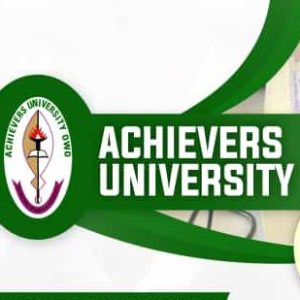
Public Lecture Delivered by Dr ‘Bisi Olawuyi of the Department of Communication and Language Arts, University of Ibadan, Nigeria on the occasion of the 2019 Annual Public Lecture of the Nigeria Institute of Public Relation (Ondo State Chapter) on Thursday, 31 January, 2019 at Towlab Hotel and Suites, Akure, Ondo State, Nigeria
Introduction
In March, 2018, I had the rare privilege of delivering the First Quarterly Lecture of the Nigerian Institute of Public Relations (NIPR), Oyo State chapter which I titled “Public Relations in/and for Governance: Towards an Integrated Relational Approach.” Although the context within which my narratives were framed was Government Public Relations, the ideas discussed resonate across platforms that require the facilitation of mutually beneficial relationship between entities and their stakeholders. The reason is not far to seek because the fundamental essence of public relations, forever, remains the “establishment and maintenance of mutual understanding between an organization and its publics” – anything that detracts from this ideal is nothing but a travesty that this hallowed profession is.
In the said lecture, I argued with some profound insight of an insider who plies his trade both as a Theorist and Practicist that “Public relations is a cheaply abused profession in Nigeria which is why almost everyone claims mastery of some sort” (Olawuyi, 2018). The quackery in the practice may be attributed to the fact that the profession “is often either misunderstood or deliberately misinterpreted” (Henslowe, 1999: 1). Hence, I concluded without an iota of equivocation as follows:
The underutilisation of the fundamental principles of public relations in driving governance has not only led to the increasing erosion of public confidence in government and its institutions, it has also undermined its capacity to mobilise citizens on issues of national consensus. The deepening, ethno-religious divide in the country, is one that should be of concern to everyone, but more for the public relations professionals who work in/ and for government because it challenges their roles as boundary spanners and members of the dominant coalition (Olawuyi, 2018).
Public relations practice elsewhere in the world, especially in the West “has reached a significant turning point in its evolution as a profession.” However, in Nigeria we still grapple with giving some reasonable semblance of professionalism to a practice which is about a century old. This is not the kernel of my discourse today, but you would soon get to realise as I intend to point out in this lecture that one of the many reasons our profession has not commanded the respect it so deserves is also part of the fundamental essence why the publics have been relegated to an inglorious backseat in our practice. Recall, a one-side coin is not a legal tender. What confers credence and credibility to what we do as public relations professional is the uniqueness of our training which gives us the technical know-how to fashion out strategic methods of relating with publics in a win-win situation. It is for this reason that I have chosen to speak on the topic: “Putting the “Publics” back in Public Relations Practice in Nigeria. I shall argue, in this lecture, with the intensity of my conviction which is based on the intersection between theory and practice that the current professional landscape as it is currently configured in Nigeria cannot midwife the return of the publics into the practice of public relations.
I have structured this lecture to provide answers to the following questions: what is public relations? put differently, what do people in public relations do? what is publics in public relations? How to identify publics? Why is it Important to know your publics? How were the publics taken out of public relations? What are the consequences of taking the publics of public relations? How can the publics be taken back in to public relations practice in Nigeria? Thereafter, I shall conclude and offer my recommendations. Answers to these questions would help place in proper perspective the very crux of the argument I shall be putting forward.
What is PR or What do people in PR do?
Based on my training as an academic, I have always sought clarifications of concepts which may have been tenuously engaged. This for me is very important in order to set the boundaries within which my arguments would be framed; otherwise there is the risk of assumption which may at the end breed confusion. Hence, what exactly is public relations? Put differently, what do people who say they practice public relations do?
In an attempt to answer the questions raised above, Bowman and Ellis (1969:1) used the analogy of a “young, pretty girl” who had approached a public relations man to define his job. In their words:
If I tell you I am handsome and exciting, that is advertising. If somebody else tells you I am handsome and exciting, that is sales promotion. If you come and tell me you have heard I am handsome and exciting, that is public relations.
Instructive as this analogy is in describing what PR people do, it nevertheless falls short of providing penetrating insight into the exclusive constructive framework of the profession’s DNA. Rather, what Bowman and Ellis (1969), succeeded in doing, was a clarification of what PR does without confusing it with advertising and sales promotion. It is important to note that public relations is much more than a contrived testimonial about someone or something. Hence, the above illustration does not exhaustively captures the entire ramifications of the operational spectrum of public relations.
The dilemma of a PR definition that gives full expression to the profundity of the practice enervates its performance. Little wonder Robert Philips in the book, Trust Me, PR is Dead, argues that “PR has become the ugly spawn of the consumer society. It has encouraged wants over needs and jeopardized the planet; and has sought to manage the message to the people rather than let the people speak for themselves” (2015: 27). Philips’ critical stance may be regarded as overly exaggerating, but a fact that is not debatable is the waning influence of public relations which can partly be attributed to a lack of a common definition that could act as a compass for navigating the complexities of the profession.
In 2012, Mr Gerard Corbett, the Chairman and Chief Executive of the Public Relations Society of America (PRSA), in attempting to address the controversies trailing what exactly what those in public relations do, resorted to describing the profession using the metaphor of beauty. According to him, public relations is “Like beauty,… is in the eye of the beholder.” If Corbett’s perspective is anything to go by, then it can be extrapolated from his analogy that public relations is a profession that cannot be benchmarked against a universal framework—a position I do not agree with. My viewpoint, therefore, is that public relations cannot be left to the idiosyncrasies of the individual professional to determine how it is practiced. The absence of a unified definition that provides the elemental basis for what the profession does, most profoundly, attests to the complexities that characterise the practice.
The lack of consensus on what constitutes the defining parameter of public relations has opened it to all manner of interpretations of what it is, should be, and ought to be. The implication of the elastic nature of public relations makes it a low entry practice that permits every Tom, Dick, and Harry the right of passage to desecrate this revered profession. Hutton (1999:199) puts it more succinctly thus:
By not developing a widely accepted definition and a central organizing principle or paradigm, the field of public relations has left itself vulnerable (1) to other fields that are making inroads into public relations’ traditional domain, and (2) to critics who are filling in their own definitions of public relations. While opportunities abound, public relations is unlikely to fulfil its promise until it is willing and able to identify its fundamental nature and scope.
The challenge of not having an agreed-upon definition of public relations, according to Bowman and Ellis (1969:1), is an indication that the “profession, craft or trade has long been cursed by both the need and the desire for a more exact definition of its scope. The attempts to arrive at a simple, brief, and accurate form of words are countless.” Rex Harlow’s definition, which was derived from a review of about 400 definitions, clearly attests to the fruitless “attempts to arrive at a simple, brief, and accurate form of words….”
In spite of this apparent limitation, a couple of definitions offer unmistakable guidepost to the quintessential make-up of public relations. In this lecture, I have adopted the definition by the Public Relations Society of America (PRSA) because it pointedly tells about the profession in an unambiguous commentary. It is important to note that this definition like several others does not tell what PR is; rather it only reveals what PR professionals should be doing or ought to be doing. It is against this background that Bruning and Ledingham (2000: x) posit that public relations is a “field more often characterised by what it does than what it is.” So, in a sense, definitions of public relations provide illuminating outlook for expected outcomes.
The PRSA says “Public relations helps an organization and its publics adapt mutually to each other.” This definition which is rendered in simple English language is not fraught with any puzzling or abstract expression which requires some elevated reasoning to unpack. It is unpretentious in its mandate for the professional to execute. This definition may appear too simplistic, but it is in the development of “planned programmes of action which will benefit both the organisation and publics interests” that the complexity of the practice challenges the professional savvy of the PR person. Hence, the definition may look simple; it is not as simple as it is rendered.
What is Publics?
If public relations is about assisting organisations and its publics to become accustomed to each other, how then do we explain the spate of conflict that we daily witness? It is quite unfortunate that some of these organisations which are embroiled in these conflicts have public relations departments. Yet they are not able, with their professional training, that is if they do have one, to mitigate these conflicts before becoming full-blown crises. Most of these problems are sterling indicators of the publics being taken out PR.
One of the changes that public relations is experiencing in its evolution is the “many references to stakeholders, rather than publics” (Newsom, Turk & Kruckberg, 2010:93). And in some other instances, both words are used interchangeably to describe the target audience of public relations activities. Newsom, et al (2010) explain that the increasing adoption of the label, stakeholder, “comes from the term stockholders, who have bought into a publicly held company and thus have vested interests in an organisation… and many others such as employees who may not actually own stocks.” Against this background, “the term stakeholders has evolved to capture that broader concept.” However, I have in this lecture, though aware of the increasing adoption of the term stakeholder, I have stuck to the use of the term publics because it helps put in perspective what we do as PR professionals which is essentially “relating with publics.”
In public relations “public” and “audience” are synonymous, but largely different. “Audience” is a group of people who are recipients of something—a message or a performance. An audience is inherently PASSIVE (Newsom, Turk & Kruckberg, 2010). There is no such thing as a general public; rather publics are definable and describable. Consequently, “…everyone interested in, or affected by an organization, or whose opinions can affect organization” (Nolte, 1974) qualifies to be an organisation’s publics. Another definition of the term publics (“active audience”) says it “encompasses any group of people who are tied together, however loosely, by some common bond of interest or concern and who have consequences for an organisation” (Newsom, et al 2010:94). Placing these definitions in perspective, publics can be described as drivers of organizational vision and mission for a sustained social impact. To ignore the publics or take them for granted, therefore, comes with consequences of unimaginable proportion.
Identifying and Prioritizing Publics
The key to a successful PR activities lies in disaggregating the publics to determine those that are active in influencing the tempo of the campaign. This is very important in order to identify the priority publics that would be the target of the public relations activities. Traditionally, publics in public relations have been classified broadly into internal and external. Despite this categorization, it is important to note that “while we can name them, it’s important to remember that any public has no homogeneity.” In other words, “all members of that public are not alike.” Therefore, “making that assumption can create problems” (Newsom, et al 2010:94).
The simple classification of publics into internal and external does not allow for a comprehensive and critical mapping of stakeholders for engagement. Hence, there are other classifications of publics which are determined essentially by PR programmes and situations.
The PR practitioner must develop a comprehensive list of publics and identify each priority public that is especially pertinent to a particular project. It is instructive to note that it is practically impossible to direct attention equally to all publics. Hence, the PR practitioner must select the publics that are MOST crucial for the communication efforts. The groups considered most important for a communication activity are called the target or priority publics.
The PVI (public vulnerability importance) index was developed to help organisations identify target or priority publics. “The potential P of a public plus the vulnerability V of the organisation to action of that public equals the importance I of that public to the organisation and to its public relations programme” (Newsom, et al 2010:95). The major deduction for the formula of determining an organisation’s priority publics recognises that the importance of publics is relative based on specific context and an organisation’s operational framework. Therefore, the PVI index helps the public relations professional to determine through research which particular publics to engage with per time.
Why has Publics been left out of public relations?
One fundamental reason why the publics have been left out of public relations is a corporate philosophy that fails to accommodate the essentials of the practice. McLaughlin (1972) notes that “public relations has far greater potential and responsibility in our society than is realised.…” But unfortunately, this potential remains a mirage because most organisations pay a lip-service commitment to the tenets of PR. As a matter of fact, studies have established that the only time public relations enjoy some form of recognisable influence is during crisis situation. The lack of a business model that fully integrates the publics as central to the systems and processes of an organisation makes such organisation to be vulnerable to crisis.
Another reason that led to the exclusion of the publics in public relations is management ineptitude. It is quite unfortunate that some organisational leaders are the problem because they “don’t understand the role and value of the practice, and they don’t view PR practitioners as legitimate members of the strategic decision-making circles” (Berger and Reber, 2006: 2). Consequently, “public relations professionals are marginalised and their voices muted. Invariably they have become Seyi and Muyiwa—glorified errand boys! Given this situation, therefore, PR lacks the capacity “to help organisations navigate a complex and turbulent world.” Also, it “makes it difficult to advance the image of professionals beyond widely held perceptions of flacks and publicists.”
Moreover, PR practitioners by act of omission or commission have contributed in a significant ways to the removal of the publics from public relations. Most often, they have been caught in the inglorious web of the piper dictating the tunes regardless of how discordant the tunes are. The situation is reflective of practitioners lacking in power and influence that are “crucial to getting things done inside organisations.” In other words, PR practitioners “need a seat at the table, or at least the attention of organisational leaders when important decisions are being taken or implemented” (Berger and Reber (2006: 1). Being a thoroughbred professional implies making a case at all times for all publics, both internal and external.
Given the social, economic and political situations in the country, more and more people have become disenchanted and disillusioned. As a result, they have lost interest in happenings around them and by implication; they have surrendered their rights to demand what rightfully belongs to them. Let us take politics as an example. The electorates possess so much power which they know not and that is why they are easily susceptible to the manipulative tendencies of politicians. The Yellow Vest Movement in France is an example of publics who are aware of the rights and within legitimate means, they are demanding for our rights. The point of reiteration is that publics have been side-lined in PR because the publics themselves are not aware of the power they possess.
The plight of the publics being removed from public relations is made even more worrisome by the inactions of appropriate regulatory bodies of public relations practice in Nigeria which are the Nigerian Institute of Public Relations (NIPR) and the Public Relations Consultants Association of Nigeria (PRCAN). These bodies are statutorily recognised by law to regulate the practice of the profession in Nigeria. The lack of appropriate and effective oversight has made the profession attractive to all-comers, which implies also that such people lack requisite professional and academic qualifications to practice. The implication of not having a water-tight regulatory framework means that the very principle that underlies PR would be compromised with impunity.
Putting the publics back: What must be done?
One, the public relations professional must be thoroughly schooled in the fundamental principles of public relations which should be based on the “understanding of the role and definition of public relations that suggests that PR provides a new level of leadership for management to integrate relationships inside as well as outside an organization using a wide range of management strategies and tactics including communication” (Caywood, 1997: xi). The integration of relations both horizontal and vertical is crucial the realisation of organisational mandate and the engineering of goodwill.
Two, the adoption and integration of the core values of public relations as business philosophy by organisations is absolutely incontrovertible. Kentucky Fried Chicken (KFC) in the United Kingdom provides a fitting example of this point. The Fast Food Company had run out chicken at its outlets in the United Kingdom and rather than engaged in the blame game, the company took responsibility and came up with a PR campaign to explain to its publics thus:
WE’RE SORRY
A chicken restaurant without any chicken. It’s not ideal. Huge apologies to our customers, especially those who travelled out of their way to find we were closed. And endless thanks to out KFC team members and our franchise partners for working tirelessly to improve the situation. It’s been a hell of a week, but we’re making progress, and every day more and more fresh chicken is being delivered to our restaurants. Thank you for bearing with us.
KFC was very proactive in engaging with its publics by empathising with them. This is a clear case of an apt recognition of the publics in this case, customers, as the heart of its business. This is what was said about the ingenuity of KFC in handling the crisis:
…to check negative perception of the brand, the KFC PR team swung into action as soon as possible. Apart from pasting messages of apology on the windows of their shut outlets, the food giants went ahead to take out a full-page ad in the newspapers to demonstrate how sorry they were. This was after realising its initial “The Chicken crossed the road” post didn’t quite hit the mark with peeved customers.
Nevertheless, the KFC PR crisis management masterclass is not centred around the fact they apologised via the newspapers, rather, it was in the way the apology the was done (http://www.lolosthoughts.com/2018/02/28/the-kfc-example-of-how-to-say-sorry/).
If KFC had failed to manage the crisis effectively that could have signalled the beginning of the end for the chicken restaurant. But, the food giant knows too well that because the very reason they are business is because of their customers. So, the PR team was not in doubt that for them to bounce back, they need to put the publics back into their public relations programme. Indeed, “when PR does it job, millions of people keep theirs.”
Another example of a business philosophy that fails to recognise the power and influence that public wield is the United Airlines. A Canadian musician, Dave Carroll’s guitar had broken in transit and efforts to get the airline to compensate him was stonewalled for a over year. Carroll posted a YouTube video titled “United Break Guitars” which was shared by his friends across social media platforms and traditional media. The video was viewed for more than 4.6 times. The viral video caused the stocks of the airline to drop by 10% creating a loss of $180 million to shareholders
Three, it is true that public relations is a specialised skills that people acquire for managing relationships between an organisation and its publics. However, it is pertinent to note that the execution of the PR efforts should not be left at the mercy of the PR team. In other words, every member of an organisation should be orientated to assume full responsibilities of PR functions even when their job description is not. It is therefore incumbent on the PR team to rally everyone to see the big picture of why the organisation exits in the first place. The point that is being advanced here is that he PR practitioner has the mandate to inculcate the knowledge and understanding of the principles and practice of PR to every member of the organisation. Otherwise, the PR professional would always be imbibed in quelling crisis which was as a result of not putting the public back into PR.
Four, the adoption of multimodal engagement across communication platforms provides for an inclusive platform to engage publics with different idiosyncrasies. Time was when publics can only be reached via the traditional media. But with the advent of the information revolution, citizens actively participate in the creation and sharing conttyents. The multimodal engagement helps the PR practitioner to be able to reach diverse publics with the same message in real time. This means that no publics can be left behind in the new regime of information architecture.
Five, an often not paid attention to matter, which can make all the differences in effective relational management technique in public relations is issues management. According to Regester and Larkin (2002), it is an attempt at bridging the “gap between corporate practice and stakeholder expectation.” In other words, issues management takes into cognisance the response to the needs of publics in a manner that it aligns to the operational dictates of the organisation. Thus, issues management guarantees the return of the publics into public relations by ensuring that organisations are proactive in their dealings to finding out what the expectations of the publics are in relation to what the organisation does.
Six, at the very core of what is considered premium service delivery are the customers. Thus, for public relations to deliver on its mandate, the age long mantra of customer is the king should be revisited. Service delivery should not be seen in it most narrow restrictive sense. Rather, it is one that should be seen as elastic enough to accommodate every transactional relationship in which value is created. In other words, Service delivery should be seen as “a component of business that defines the interaction between providers and clients where the provider offers a service, whether that be information or a task, and the client either finds value or loses value as a result. Good service delivery provides clients with an increase in value.
Seven, an albatross of the PR profession that has short-changed the publics is the low entry for would-be-practitioners. PR is one profession that anybody could wake up one day and say he is practicing. Hence, in order to guarantee the return of the publics into PR, there is the need for NIPR to establish minimum entry level for public relations professionals. It is heart-breaking to see people with no formal training in public relations parade themselves as professionals because the bar is too low to accommodate every Tom Dick and Harry to claim mastery of some. It is characters like this, who are schooled in the fundamentals of PR that would superintend the continued exclusion of the publics in public relations because they erroneously are of the opinion that PR is about acting as the Master’s Voice.
Highly commendable is the recent effort by the NIPR to clamp down on the inappropriate and criminal recruitment of unqualified persons as spokesperson by organisation. More worrisome is the role by government in the promotion of this charade and the illegality of appointing persons who are lacking in the basic requirements for the office. According to the president of NIPR, Mallam Muktar Sirajo:
There are laid down rules about appointing spokespersons; the law establishing NIPR makes it a criminal offence for anybody to practice public relations by whatever name without certification or licensed by NIPR.
There are set parameters of knowledge you need to acquire before you can practice public relations. The law actually provides for imprisonment, fine, or both.
Unfortunately, the government too does not come clean in respect of this. Most of the people government appoints to be spokespersons are in violation of this very important creed.
The government is either unaware of, or has forgotten that there is a law that says you cannot practice Public Relations, PR, without license from the NIPR. In essence, the government too cannot appoint a spokesperson if that person is not licensed by the NIPR.
I sincerely hope the leadership of the NIPR will sustain this “fight” to the end because it is very crucial and highly strategic in putting the publics back into public relations practice in Nigeria.
Eight, corporate social responsibility (CSR) is a golden opportunity for organisation tostrategically put the publics back into PR practice in Nigeria. Findings from studies have shown most organisations are involved in CSR for mercenary rather than missionary motive. The former is perfunctorily executed while the latter engages with stakeholders to determine their felt needs in order to respond to them. It is high time organisations involved their stakeholders in the process of meeting their needs. It is important for organisations to know what they think the stakeholders need may actually be a want to them.
Benefits of putting the publics back into PR
The nexus between organisations and their publics is a symbiotic relationship that confers mutual benefits on both parties. It is worth reiterating that what makes public relations so uniquely different as a profession “emerges from the self-defined role of public relations building “relations” or integrating relationships between an organisation and its publics.” (Caywood, 2006: xi). Against this background, our practice would be meaningless if the concerns of our publics are disregarded. Whether in business, not-for-profit, and government the benefits of putting the publics back into public relations is enormous and I shall proceed to enumerate them:
1. Putting the Public Back in Public Relations is a critical and mandatory process for organisations to bank goodwill with their publics in today’s competitive terrain. In other words, it would afford organisations to cultivate and deepen sustainable relationship with their publics such that they get to meet them before they need them.
2. Putting the Public Back in Public Relations will help organisations to forge meaningful relationships with those who will bridge specific benefits to distinct groups of publics in order to cultivate a loyal, vocal, and hyper-connected community of customers and influencers.
3. Another benefit of Putting the public back into public relations is that it will give organisations the “unique opportunity for communications to be transformative.” The implication is that there will be genuine dialogue that is based on two-way symmetrical communication in which both parties actively listens to each other.
4. Organisations that endeavour to put the publics back into their public relations practice creates a sense of belonging in them and such could be advocates and champions of their cause.
5. A company’s reputation is tested during crisis. When organisations put the public back into public relations, they are guaranteed of enjoying the support of their publics in turbulent times.
6. Putting the publics back into public relations gives an organisation an edge over its competition with similar pedigree. In other words, such publics who enjoy the attention of an organisation would reciprocate by choosing to patronise its goods and services.
7. Putting the publics back into public relations gives an organisation leverage with dependable sources of supply, secures efficient and profitable distribution.
Conclusion
I have in this lecture attempted to show how crucial it is for our public relations professionals to begin to pay more attention to the publics because they are the very reason for the practice. We have been so carried away by doing the bidding of our principals to the detriment of effectively engaging with our critical stakeholders perhaps because they pay us. But I make bold to say that the very reason most organisations have not enjoyed the deserving goodwill of their publics is not because they feel left out but actually left out. Distinguished ladies and gentlemen, if the publics must be put back into public relation practice in Nigeria, then we must be ready to engage in two-way communication that is devoid of any form of prejudice.
Public relations experts have agreed that the profession “involves two-way communication between an organization and its public. It requires listening to the publics on which an organization is dependent as well as analysing and understanding the attitudes and behaviours of those audiences. Only then can an organization undertake an effective public relations campaign consisting of actions as well as words.(https://www.referenceforbusiness.com/encyclopedia/Pro-Res/Public-Relations.html#ixzz5dxmdkEfx).
Finally, ladies and gentlemen, for us to restore the dignity of our noble profession, we need to urgently put the publics back into public relations practice in Nigeria. This will restore the trust deficit most organisations are experiencing with their publics. We must know and understand that “trust is not a message. It is an outcome.
When PR does its job, millions of people keep theirs.
Thank you.
References
Hutton, J. G. (1999). The definition, dimensions, and domain of public relations. Public Relations Review, 25(2), 199–214. doi:10.1016/s0363-8111(99)80162-3














